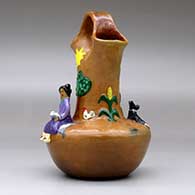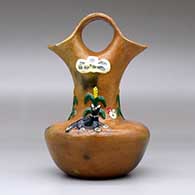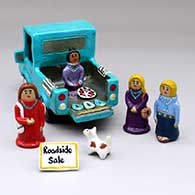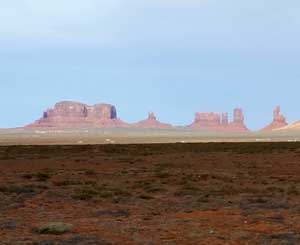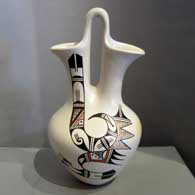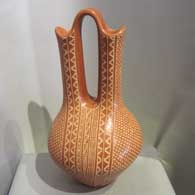
Elizabeth Manygoats, Dineh, A polychrome wedding vase with a Navajo Lifestyle design, a sitting woman reading and a dog applique with an agricultural background
Elizabeth Manygoats
Dineh
$ 295
zznv4h213
A polychrome wedding vase with a Navajo Lifestyle design, a sitting woman reading and a dog applique with an agricultural background
5 in L by 5 in W by 7.25 in H
Condition: Excellent
Signature: Elizabeth M.
Date Created: 2024
Dineh
$ 295
zznv4h213
A polychrome wedding vase with a Navajo Lifestyle design, a sitting woman reading and a dog applique with an agricultural background
5 in L by 5 in W by 7.25 in H
Condition: Excellent
Signature: Elizabeth M.
Date Created: 2024
100 West San Francisco Street, Santa Fe, New Mexico 87501
(505) 986-1234 - www.andreafisherpottery.com - All Rights Reserved
(505) 986-1234 - www.andreafisherpottery.com - All Rights Reserved
Rose Williams Family & Teaching Tree
Dineh (Navajo)
Disclaimer: This "family tree" is a best effort on our part to determine who the potters are in this family and arrange them in a generational order. The general information available is questionable so we have tried to show each of these diagrams to living members of each family to get their input and approval, too. This diagram is subject to change should we get better info.
- Rose Williams (1915-2015), learned how to make pottery from her aunt, Grace Barlow
- Alice Cling (1946-)
- Michelle Williams (c. 1970-)
- Susie Williams Crank & Lorenzo Spencer
- Sue Ann Williams (1956-)
- Andrea Williams
- Lorraine Williams-Yazzie (1955-2024)(daughter-in-law)
- Stuart Roy (son-in-law)
Some of Rose's students: - Louise Goodman (1937-2015)
- Silas Claw (1913-2002) & Bertha Claw (1926-2022?)
- Faye Tso (1933-2004)
- Lorena Bartlett
- Betty (Barlow) Manygoats (learned how to make pottery from her paternal grandmother, Grace Barlow)
- Elizabeth Manygoats
- Larrisena Manygoats
- Evelyn Manygoats and Jonathan Chee
Some of the above info is drawn from Navajo Folk Art, by Chuck and Jan Rosenak, © 2008, Rio Nuevo Publishers
Other info is derived from personal contacts with family members and through interminable searches of the Internet.

